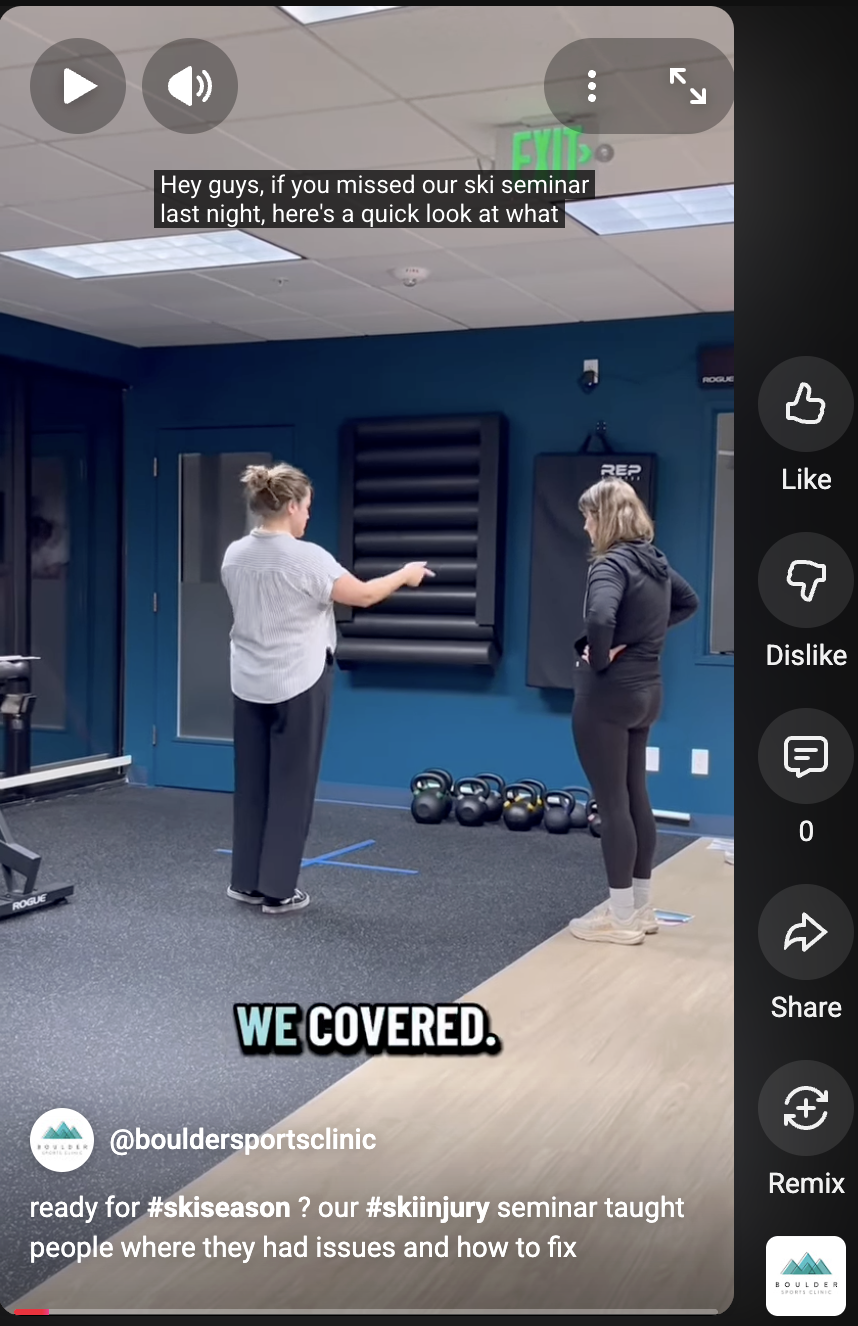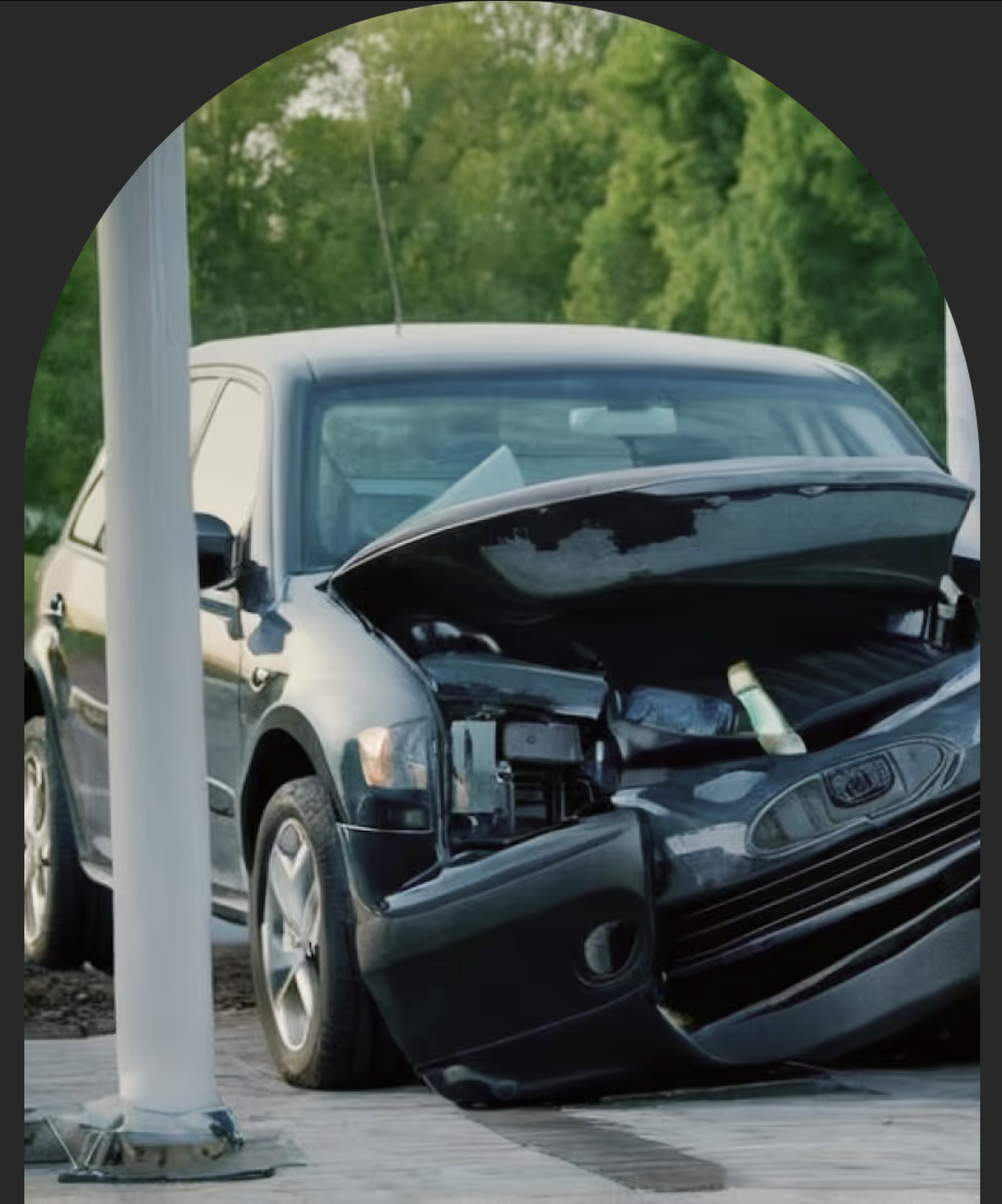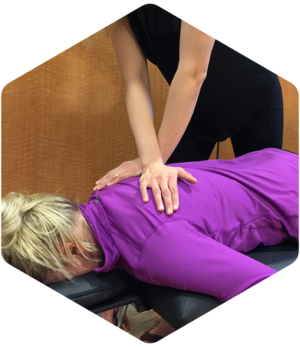Is Your Body Ready for Ski Season? 4 Simple Tests to Predict Injury Risk in Boulder, CO
Is Your Body Ready for Ski Season? 4 Simple Tests to Predict Injury Risk in Boulder, CO
Ski season is here in Colorado—and every year we see the same pattern at Boulder Sports Clinic: people hit the mountain excited and motivated… but their bodies aren’t as prepared as their gear.
The result?
Knee injuries. Hip pain. Ankle sprains. Preventable shutdowns halfway through the season.
So we recently hosted a free in-clinic ski injury prevention seminar to help skiers and snowboarders identify their biggest movement limitations before they lead to an injury. The idea was simple:
If you can spot a weakness early—and address it—you dramatically reduce your injury risk.
If you missed the event, don’t worry. Below is a full recap and the exact four tests we used so you can assess yourself at home.

✅ Why Skiers Get Injured (and Why Most Don’t Know It’s Coming)
Research and decades of clinical experience point to two major predictors of injury:
1. Previous injury
If you’ve hurt something before—especially your knee, hip, ankle, or low back—your risk skyrockets.
2. Asymmetry
Meaning one side performs differently than the other.
Most people don’t notice asymmetries in daily life…
…but skiing exposes every weakness—fast.
That’s why we use movement-based testing rather than isolated muscle strength. At Boulder Sports Clinic, we rely on the SFMA (Selective Functional Movement Assessment) to evaluate how the body works as a system—just like it does on the mountain.
🏔️ Test Yourself: 4 At-Home Screens Every Skier Should Try
Perform each test below and compare right vs. left.
If one side is harder, shakier, or painful—that matters.
### 1. Deep Squat – Mobility & Ski Posture Control
What it tells you:
Hip, knee, and ankle mobility—critical for staying stacked over your skis.
How to test it:
- Stand with feet shoulder-width apart
- Arms straight overhead
- Squat as low as possible without heels lifting
A good result:
- Chest stays upright
- Heels stay on the ground
- Hips below knee level
If this was difficult:
Try this mobility drill:
- Half-kneeling ankle dorsiflexion stretch
- 20–30 slow reps each side
- Retest your squat
Limited depth often means:
- stiff ankles
- tight hips
- compensations that increase knee strain
2. Single-Leg Anterior Reach (Y-Balance Inspired) – Quad Strength & Knee Control
Why it matters:
Most ski injuries involve the knee, and the quad is the #1 stabilizer.
How to test it:
- Stand on one leg
- Reach the opposite foot forward as far as possible
- Keep your heel down and hips level
What you’re looking for:
- No collapsing inward
- No trunk lean
- No wobbling
Side-to-side difference bigger than ~4 cm?
That’s a red flag.
Try this strengthening drill:
- Single-leg wall sit
- Hold as long as possible (pain-free)
- Switch sides
- Aim for:
- Men: 75–100 seconds
- Women: 45–60 seconds
Struggling?
Your quads may not be ready for deceleration and landings.
3. In-Line Lunge – Hip/Core Stability
Why we test it:
Poor lateral hip control is strongly linked to ACL and MCL injuries—especially in skiers.
How to test it:
- Stand with one foot directly in front of the other (heel-to-toe)
- Lower into a lunge without wobbling or rotating
- Switch sides
Good performance looks like:
- Pelvis stays level
- Torso tall
- No knee collapse inward
If this was challenging, do:
- Side plank
- Goal: 60–75 seconds per side
- Bird-dog
- 3 slow reps each side with zero trunk rotation
Weakness here = unstable knee under load.
4. Box Hop Test – Power & Ankle Readiness
Why it matters:
Snowboarders especially rely on ankle stability for landings and edge control.
How to test it:
- Hop onto a low step or box repeatedly for 20–30 seconds
- Track:
- Quality (smooth vs. sloppy)
- Control (knees stable, soft landings)
If it felt unsteady:
Try:
- Lateral skater jumps
- Rear-foot elevated split-squat hops (RFESS hops)
Start small.
Quality > quantity.
🧠 What to Do With Your Results
✅ If both sides felt strong and symmetrical → great, keep training.
✅ If one side was shaky, weaker, or painful → don’t ignore it.
✅ If you have a history of knee, hip, ankle, or back injury → you need a personalized plan.
These tests don’t diagnose an injury—
they predict risk before it becomes one.
⛷️ Ready to Ski With Confidence This Season?
If any of these tests were:
- difficult
- uneven
- painful
- or just felt “off”
that’s exactly what we specialize in.
Schedule a Ski-Readiness Assessment at Boulder Sports Clinic
You’ll receive:
✅ a full movement screen (using the SFMA)
✅ strength + mobility testing
✅ customized exercise plan
✅ hands-on treatment if needed
✅ a strategy to prevent injury before you hit the mountain
Don’t wait until something hurts.
Most ski injuries happen in the first 3–5 days on snow—and they’re preventable.
👉 Call us or book online today to get ski-season ready.
Your body is your best piece of equipment—
let’s make sure it’s tuned. 🏔️💪
Related Posts

The Vital Role of Physical Therapy in Treating Tendon Issues

Car-Crash Injuries in the Longmont & Boulder Area: Why You Need Chiropractic + Physical Therapy + Massage Therapy

Boulder Chiropractors & Physical Therapists with Sports Medicine Training: Why Certification Matters
Experience the difference at Boulder Sports Clinic.
Contact us today to schedule an appointment and start your journey towards optimal health and peak performance. Still have questions? Call us now at (303) 444-5105

